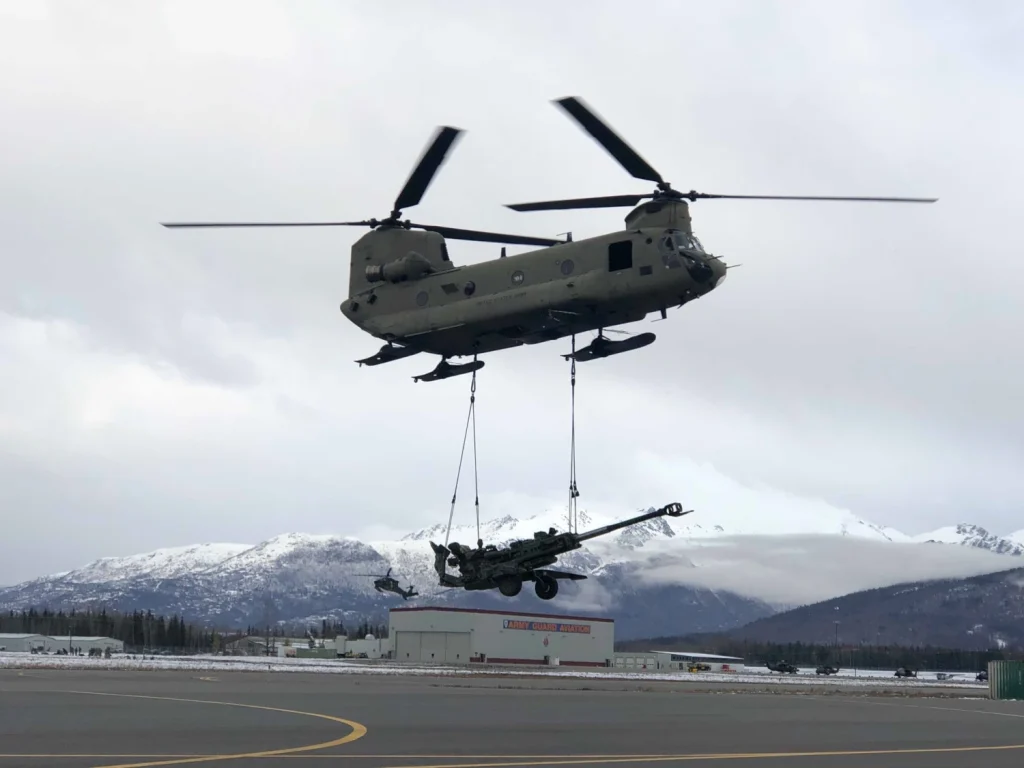Earlier this month, it was reported that over 100 advanced long-range rocket launchers have been deployed by the Chinese military along its high-altitude borders with India. After the failure of a round of border talks held earlier this year which was aimed at disengagement from the strategic area in the high-altitude Depsang Plains, this move of the Chinese military came into the picture.
Also as a response to the deployment of the M777 ultra-light howitzers along the contested LAC and in preparation for the intense Himalayan winter, the People’s Liberation Army’s (PLA) move came in.
Chinook helicopters deployed
Centred on the Tawang Plateau in Arunachal Pradesh, the current build-up is positioned in India’s northeastern region. While India’s communist neighbour claims the land, it is controlled by India and adjoins both Bhutan and Tibet and it holds immense historical, political, and strategic value.

The US-made Chinook helicopters and light howitzers are deployed by India in order to dig its feet firmly into the ground here. That said, homegrown supersonic missiles are also set for action.
Manufactured by Boeing Vertol, the chopper was designed and developed by the US rotorcraft company Vertol while there were multiple reasons for the Indian Air Force (IAF) to choose the CH-47 Chinook.
All about Chinook
Equipped with the capability of airlifting various military and non-military loads into remote locations, the heavy-lift copter has a twin-engine tandem-rotor design.
Advanced cargo-handling capabilities are equipped by the Chinook helicopters which facilitates the aircrews for a quick and convenient shift from missions. During missions, personnel onboard can change from moving cargo to transporting vehicles, people, and other materials at hand.
With regards to providing support for the construction of border road projects as well as the construction of infrastructure, these choppers come in handy while on the other hand, it is claimed by Boeing that Chinooks can be operated in altitude (high), crosswind, and climatic (hot) conditions as well.
Chinooks have been accorded it with a certain reputation and political clout by its history of being used by the US Army as well as the defence forces of more than 19 countries. A fully-integrated glass cockpit has been possessed by the chopper for mission management while in order to enhance aircrew safety, a digital advanced light flight control system has also been built.
India’s Bigger Plans
The Chinooks and Howitzers don’t stand in isolation for dealing with the Chinese pressure as India also seems to be prepared for working with its allied nations to ensure the security of the region.
Apart from this, the world’s longest two-lane tunnel close to 4,000 meters above sea level is being constructed by the Indian engineers while the tunnel runs underneath an important mountain pass which is bound to be accessed only by a 317 km road to the disputed border at the moment.
Earlier deployments at the LAC
Earlier this year, the upgraded vintage L-70 air defence guns were deployed along the LAC by the force along with Bofors and M777 howitzer. The vintage L-70 anti-aircraft gun was reported to be converted into a “drone killer”.
After deploying the guns, to counter any threat arising across the LAC, the Pinaka and Smerch Multiple Rocket Launcher Systems (MRLS) were also deployed by the Indian Army at a forward position near the China border.
The system is capable of engaging area targets up to 38km at the mean sea level while it is an autonomous rocket artillery system. The deep strike capability of the weapon system is augmented as the ranges are enhanced at these altitudes significantly.
A salvo of 72 rockets can be easily fired by a battery of six launchers of Pinaka within 44 seconds which is capable of neutralizing an area of 1000m by 800m.
On the other hand, with a message to China, India had also test-fired its Agni-V missile.
Increased preparedness
A few days back to tackle the Chinese during violent face-offs, Non-lethal weapons were provided to the Indian security forces deployed along the Line of Actual Control (LAC) after barbed clubs and tasers were used by the Chinese troops against the Indian forces in the Galwan valley clash.
Soon after the Galwan valley clash, a Noida based start-up firm was tasked to facilitate the Indian security forces with equipment allowing them to tackle the Chinese and a solution for the same was provided by the company in the form of non-lethal weapons inspired from the traditional Indian weapons like Trishul (Trident) of the Hindu god Shiva.
